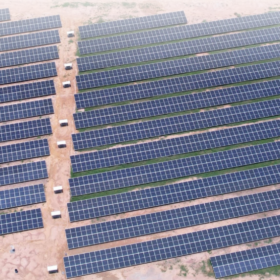The global energy sector is facing a decisive inflection point. As the urgency to decarbonize intensifies and climate volatility threatens grid stability, businesses and governments are rethinking the foundations of our energy infrastructure. In this shift, Environmental, Social, and Governance (ESG) technology is emerging not as a compliance tool but as a core driver of resilience, decentralization, and climate-aligned growth.
Today, forward-thinking organizations are embedding ESG tech into their broader energy strategies. No longer a checkbox exercise, ESG integration is helping companies align with net-zero goals, embrace distributed energy resources, and build agile, future-ready operations. This shift also opens access to ESG-linked financing and strengthens brand credibility in a world that increasingly rewards sustainability and transparency.
India’s energy roadmap strongly supports this transition. The 2024–25 budget emphasizes sustainability, innovation, and energy security, promoting pumped storage projects, advancing nuclear technology, and expanding renewable energy initiatives. The government’s ambition to achieve 500 GW of non-fossil fuel power capacity by 2030 sets a clear signal to both industry and investors that accelerating clean energy deployment is not just a national priority but an economic imperative.
Decentralization demands intelligence
As grids make the transition from centralized systems to networks of individual energy producers and consumers, ESG-aligned innovations are making implementation feasible and efficient. A new generation of digital tools is assisting companies in managing this complex landscape:
- Digital ESG data platforms collect real-time insights from IoT sensors and smart meters to monitor energy use, track emissions and detect inefficiencies
- Predictive analytics engines help businesses plan ahead by forecasting climate risks and sustainability opportunities
- Supplier traceability systems provide visibility into ESG performance across extended supply chains, which is essential in decentralized models
These technologies are streamlining energy operations and aligning ESG metrics with business performance. This gives organizations clearer insights, stronger governance, and better environmental outcomes.
Resilience in the face of disruption
One of the strongest cases for ESG tech is its ability to improve operational resilience. Through data insights and automation, companies can prepare for grid challenges such as demand spikes or climate-related outages. These platforms enable:
- Better grid reliability with real-time diagnostics and load management
- Smarter energy sourcing that reduces emissions and supports demand-side efficiency
- Lower operational waste through optimized energy use
In India, the need for such resilience is becoming more evident. According to the “Energy Statistics India 2024” report by the Ministry of Statistics and Programme Implementation, total emissions from the energy sector have been on the rise, underscoring the urgency for sustainable energy practices and stronger ESG-aligned interventions.
Transparency in ESG performance is also receiving regulatory support. The Securities and Exchange Board of India (SEBI) mandates ESG disclosures through the Business Responsibility and Sustainability Reporting (BRSR) framework for the top 1,000 listed companies. This move enhances visibility into energy consumption and sustainability practices and reinforces accountability across the corporate sector.
Numerous organizations are starting to derive value from their initiatives. ESG and business metrics are displayed side by side on dashboards. ESG audits are creating deeper transparency and trust among investors and stakeholders.
Turning challenges into advantage
The widespread adoption of ESG technology is not devoid of obstacles. Issues such as inconsistent data quality, limited visibility in the supply chain, and misalignment between sustainability objectives and business outcomes tend to be cited as challenges. Leading organizations are pointing to focused materiality assessments, building ESG capability over time across teams, and the upfront engagement of leaders to overcome these barriers. It becomes realistic and long-lasting when teams in sustainability, operations, and procurement collaborate in a coordinated way.
Transitioning to decentralized, climate-ready energy is no longer a vision for the future. It is taking place today. ESG technology is the thread creating this pathway. The question is not whether we should invest in ESG tech but whether investing in an energy strategy is viable without it.
The views and opinions expressed in this article are the author’s own, and do not necessarily reflect those held by pv magazine.
This content is protected by copyright and may not be reused. If you want to cooperate with us and would like to reuse some of our content, please contact: editors@pv-magazine.com.








By submitting this form you agree to pv magazine using your data for the purposes of publishing your comment.
Your personal data will only be disclosed or otherwise transmitted to third parties for the purposes of spam filtering or if this is necessary for technical maintenance of the website. Any other transfer to third parties will not take place unless this is justified on the basis of applicable data protection regulations or if pv magazine is legally obliged to do so.
You may revoke this consent at any time with effect for the future, in which case your personal data will be deleted immediately. Otherwise, your data will be deleted if pv magazine has processed your request or the purpose of data storage is fulfilled.
Further information on data privacy can be found in our Data Protection Policy.